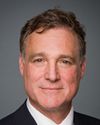Great question.
Since November of 2010 we have visited 22 bases across the country on exactly that, an outreach piece with Veterans Affairs, which I've ultimately hosted on each base with the senior personnel, my counterparts from Veterans Affairs, to do exactly that, get the word out to serving personnel, regular reserve. Veterans are invited; the Legion is invited to get it out.
My contention is that, regrettably, and maybe fortunately, when people join the Canadian Forces at the recruiting centre, they often look only at the positive side. It's a selective understanding piece. They love the training, the opportunities, the travel, the professional competencies they can get. There's a sense of adventure. But I would contend that not everybody pays close attention to what happens if, au cas où....
I have said to people as I've gone around the country, what you really need to do, ladies and gentlemen, is pay as much attention to what happens if things go bad, because we're in a dangerous game, let's admit that. You need to pay attention to how you and your family will be looked after if that happens to you, if you're one of the unfortunate ones.
After having gone to 22 bases, I can say with confidence that the word is out. And we continue an outreach program through the JPSUs, which are on each base. We continue to put out awareness material in the various publications we have. But in my view, there is no substitute for the leadership going out, giving a presentation, and then taking the questions and answers. In almost every instance--we've been across the country--there have been tough questions from people who have either been frustrated or had a bad experience, and that's what we're there for, to help them understand this.
I think we have come a long way in doing that outreach piece.




